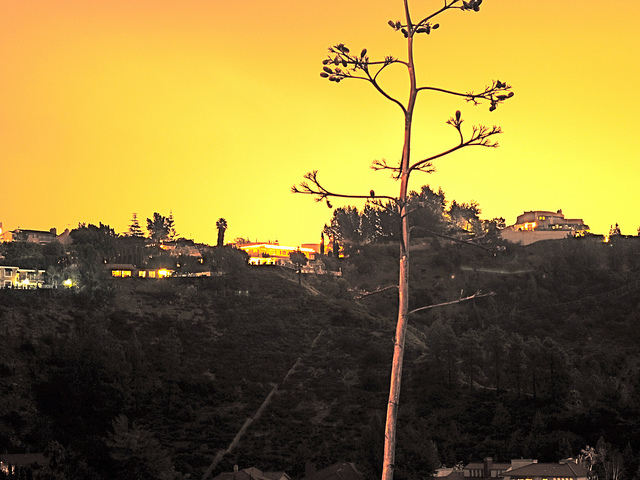
Later, after the robberies, Nick Prugo, a teenager from Calabasas, California[1] would recount watching his best friend and partner in crime, nineteen-year-old Rachel Lee, board a plane for Las Vegas: “she was, like, rolling Lindsay’s suitcase, wearing Lindsay Lohan’s purse and Lindsay Lohan’s clothes—she was just, like, fully Lindsay Lohan.”
Prugo’s description was more than a flight of fanciful celebrity worship. Just hours before, on the evening of August 23, 2009, the two teens had jimmied open a window of Lohan’s home and helped themselves to more than a $100,000 worth of the notorious starlet’s belongings. It wasn’t their first burglary. For the past year, Prugo, Lee, and a loosely knit group of their well-heeled teenage friends were busy burgling the homes of actresses, models, and reality TV stars including Paris Hilton, Megan Fox, and Orlando Bloom (their real target there was his then-fiancée, Victoria’s Secret model, Miranda Kerr). They accumulated an estimated 3 million dollars’ worth of designer goods and jewelry. Some of it they sold. Most of it they kept. They wanted, as Prugo described, “the beautiful, gorgeous things, like Marc Jacobs, Gucci, Yves Saint Laurent.”[2]
They wanted to emulate the style their celebrity idols displayed at the clubs and in the magazines and on the Internet. But more than that, they wanted things. Specifically, they wanted things that belonged to celebrities, as if Miranda Kerr’s underwear had talismanic properties: Slip into them and you don’t just feel like a Victoria’s secret model. You are a Victoria’s Secret model.
They entered Paris Hilton’s front door using a key she kept under the doormat.
In Nancy Jo Sales’s new book, The Bling Ring: How a Gang of Fame-Obsessed Teens Ripped Off Hollywood and Shocked the World, she examines the pathology of these teenage thieves and the culture of conspicuous consumption that nurtured them. An expansion of her 2010 Vanity Fair article, “The Suspects Wore Louboutins,” Sales’s book ties in with the release of Sofia Coppola’s forthcoming film, also titled The Bling Ring, and starring Emma Watson as an Ugg-wearing, lip-glossed Valley Girl based on one of the convicted thieves, Alexis Neiers, who herself briefly starred in a reality show called, “Pretty Wild” about Hollywood “it” girls.[3] In one episode of “Pretty Wild” (titled Vanity Unfair), Nancy Jo Sales appears on camera conducting an interview for her article. “What is it like to be you?” she asks Nieres.
If all of this seems something like an infinity loop of media exposure, the irony is not lost on Sales, who attempts to create out of this chaos a narrative of contemporary American society. How exactly does someone like Paris Hilton, someone with no talent, no skills and arguably even less charm and charisma than your average middle-school mean girl become famous? And even stranger, how does she then become even more famous for being famous? Inside our culture’s uncanny valley where viewers can easily savvy the notion of “scripted reality” television, the simulacrum has become the real. Prugo’s often blasé descriptions of his crimes to Sales makes one wonder how a young person, navigating the path towards adulthood, comes to understand empathy or morals when the world is reflected back like an image on Instagram: instantaneous, digitally manipulated, and ready to be infinitely shared, devoid of context.[4]
As the actors wandered through the rooms of her gauchely appointed abode, stuffing jewelry into Louis Vuitton totes in a recreation of the robberies, it seems possible that a glittery, rhinestone-encrusted rip appeared in the very fabric of space and time.
For all of the Bling Ring’s criminal successes, they were certainly not seasoned thieves—they didn’t need to be. Sales describes how they entered Paris Hilton’s front door using a key she kept under the doormat. Other celebrities left their doors unlocked and security systems turned off. The kid burglars monitored the stars’ comings and goings on sites like TMZ.com that tracked their every move, detailing just what party they would be at and when. They used Google Maps to find the best access into the homes of the rich and famous. They were often brazen about their crimes, regularly showing up on security footage, footage that was itself later leaked to TMZ.com.
Hilton herself testified before a grand jury about why she didn’t turn on her alarm: “before this, I felt so safe in this gated community, like no one could ever get in, that I sometimes would just go out and not even think to put the alarm on, because I never thought anyone could get in my home.” Hilton would go on to grant Sofia Coppola access to her home for The Bling Ring. As the actors wandered through the rooms of her gauchely appointed abode, stuffing jewelry into Louis Vuitton totes in a recreation of the robberies it seems possible that a glittery, rhinestone-encrusted rip appeared in the very fabric of space and time.
Sales’s book does a fine job of bringing the story of the Bling Ring out of the chimerical media-space it might occupy and returning the story to reality. She shows us the troubled, insecure teenagers behind the crimes, concerned as much, if not more, with the judgment of their peers than with notoriety. The surface of their story may be glamorous, but its underpinnings are mundane: they are kids let loose by absentee or unfit parents into the sundrenched cul-de-sacs and freeways of Southern California with little more than a prescription for Adderall to act as a moral compass. This is not to say they aren’t responsible for their crimes or even that they don’t represent the very worst of the slow creep of narcissism permeating our culture. Rather, her account shows how very close we all live to a fault line of utter artifice. Judge not the commodification of human life lest ye be prepared to admit that Kourtney is your favorite Kardashian.[5] And remember to lock your doors.
NOTES
1. Calabasas, an affluent city in Los Angeles County, has become perhaps most notable as the setting for “Keeping Up With the Kardashians,” the reality series that premiered in October of 2007 and made Kim Kardashian a megastar. Kardashian, now pregnant with Kanye West’s child and a fixture in the tabloid press, was once a professional closet organizer. Her clients included Rob Lowe, Sugar Ray Leonard, and Paris Hilton. In 2008 the “Bling Ring” ransacked Hilton’s closet, making off with jewels, handbags, cocaine, and topless pictures of the heiress.
2. Sofia Coppola, director of the Bling Ring, and daughter of filmmaker Frances Ford Coppola, is close friends with and occasional muse to Marc Jacobs. She wore one of his designs to accept her 2004 Academy Award for Best Original Screenplay. She has, at various times been photographed in YSL, and recently designed a handbag collection for Louis Vuitton.
3. A clip from the “Vanity Unfair” episode of Pretty Wild featuring Alexis Neires leaving hysterical voicemails for Nancy Jo Sales about shoes and tweed skirts would later go viral on YouTube.
4. Instagram would not be launched until October of 2010, a year after the Bling Ring’s criminal exploits took place. As of February 2013 the photo sharing app reports having 100 million active users. Alexis Neiers’s website links to her current Instagram account. She has over 16 thousand followers.
5. My favorite Kardashian is, of course, Khloe.
The Bling Ring opens today in New York and LA, nationwide next week.
Leah Carroll is a writer living in Brooklyn.

